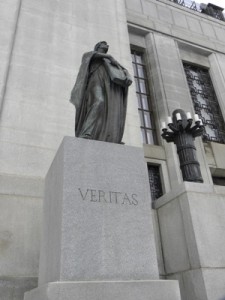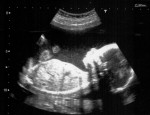 The decision was a complex one, as there were actually three different sets of reasons for judgment that formed the majority opinion. There was also a dissenting opinion.
The decision was a complex one, as there were actually three different sets of reasons for judgment that formed the majority opinion. There was also a dissenting opinion.
Summary of the Majority Opinion
–
A report from the Library of Parliament summarizes the majority opinion as follows:
“At the risk of oversimplifying, the Court found that the legislation interfered with the security of the person of a woman in limiting, by criminal law, her effective and timely access to medical services when her life or health was endangered. This criminalization was not in accordance with fundamental justice. For all the reasons noted by the Badgley Committee and testified to by numerous experts, access to the certificate of a therapeutic abortion committee, which provided a valid defence to criminal charges, was not equally available across the country. In addition, the procedure set out in the Criminal Code could cause extensive delays, which further endangered the woman’s life or health, and it was fundamentally unjust to require a woman to impair her health in order to remain within the law.”1
In other words, it was essentially the lack of equal and timely access to a criminal defence in those cases where continuation of the pregnancy would endanger a woman’s life or health that made the law unconstitutional. The Court did not say that unequal access to abortion itself was unconstitutional.
All majority judgments (Justices Dickson and Lamer; Justices Beetz and Estey; and Justice Wilson) found that the abortion provisions of the Criminal Code (section 251 at the time, currently section 287) violated the Charter 7 right to “security of the person.” Section 7 reads as follows:
7. Everyone has the right to life, liberty and security of the person and the right not to be deprived thereof except in accordance with the principles of fundamental justice.2
Justice Bertha Wilson also found that the abortion law violated the section 7 Charter right to “liberty” as well as “freedom of conscience” guaranteed by section 2(a) of the Charter.
The Court was unanimous in finding that the state had a legitimate interest in the protection of the fetus. As to whether the fetus is included in the word “everyone” in the Charter and thus has an independent right to “life, liberty and security of the person,” all of the majority judgments noted that the court had not been asked to decide that question. 3 It remains an open question.
The Three Sets of Reasons for Judgment were as follows:
–
Chief Justice Dickson and Justice Lamer
Justice Beetz and Justice Estey
Madam Justice Wilson
–
Conclusion
–
While all 3 majority judgments found the abortion provisions of the Criminal Code (section 251 at the time, currently section 287) to be unconstitutional, they found so for different reasons. They all found that the procedural requirements violated a woman’s Charter 7 right to “security of the person.” Only Justice Wilson found that the abortion law also violated a woman’s Charter 7 right to “liberty.” She alone also found the abortion law to be a violation of “freedom of conscience” guaranteed by section 2(b) of the Charter.
Justice Wilson was the only judge who decided that a woman has a Charter right to abortion, based on the right to “liberty,” but only in the early stages of pregnancy. She concluded that at some point in gestation, Parliament is justified in restricting abortion in order to protect the fetus which she considered “potential life.”
Regarding options for any future legislation, Sheilah Martin compares the judgments thus:
All of the judges concluded that the federal government has a legitimate interest in protecting the foetus which would justify the use of the state’s criminal law powers. Chief Justice Dickson gave no indication how far he believed that state interest extended….Mr. Justice Beetz would allow limitations on why a woman could obtain an abortion and the minimum administrative structure necessary to ensure compliance. Neither of these judgments addressed the stage in the pregnancy at which the government’s interest became pressing, legitimate, or substantial.”4
–
References:
- Abortion: Constitutional and Legal Developments, prepared by Mollie Dunsmuir, Law and Government Division, Reviewed 18 August, 1998. ↩
- Canadian Charter of Rights and Freedoms, section 7 ↩
- Abortion: Constitutional and Legal Developments ↩
- Martin, p. 429 ↩



